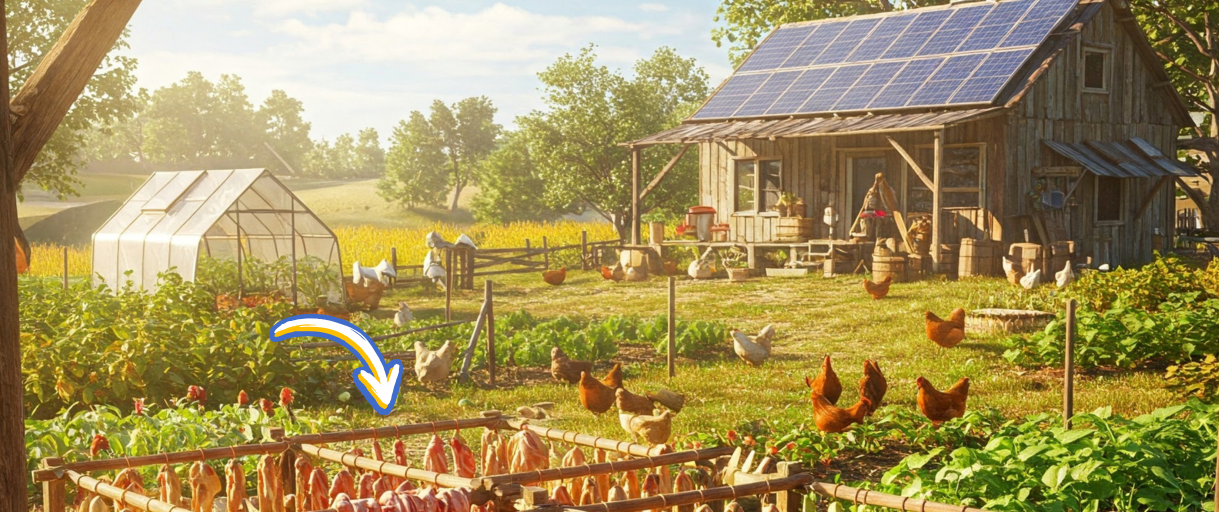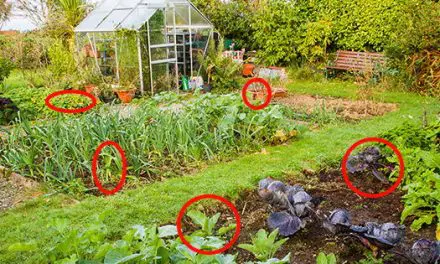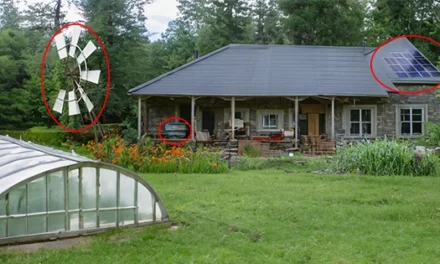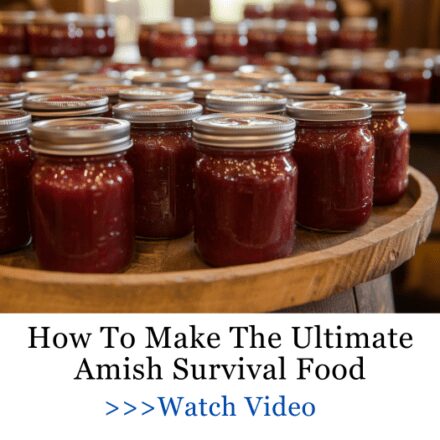Slice a solar-dried strawberry beside one from an electric dehydrator. You’ll taste the difference instantly.
The sun’s gentle, slow heat intensifies natural flavors without scorching the sugars or turning them bitter. Plus, more nutrients stick around.
Solar drying uses nothing but consistent heat and airflow to evaporate moisture – no electricity needed. So when storms cut the power or your freezer fails, solar-dried goods become your pantry’s secret weapon.
All it takes is a sunny spot, a few simple materials like old window screens, and the courage to trust the sun.
Which Foods Work Best in the Sun
Not every crop belongs in the sun, but the right picks turn into pantry heroes. Start with thick-skinned fruits like tomatoes, peaches, or apples. Their low moisture content speeds drying and minimizes rot.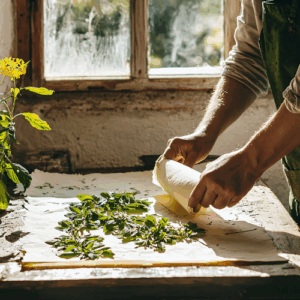
Thin-skinned strawberries? They’ll mold fast unless you pre-treat them with a lemon juice dip (1 part juice to 4 parts water). Herbs like mint or thyme thrive too; hang whole stems upside-down under mesh to trap oils without losing leaves to wind.
Got venison or wild boar? Slice lean cuts into jerky strips, marinate in vinegar-heavy brine (pH matters!), and dry on elevated racks. Flies hate airflow. For plant-based protein, try pressing tofu into ½-inch slabs, soaking them in tamari, and laying them on sun-warmed stones.
The result? Chewy, savory bites that outlast refrigeration. Even stale bread gets a second life: tear leftover sourdough into chunks, sun-dry until crisp, and blitz into breadcrumbs that stay fresh for months.
Here’s the kicker: the sun works as a flavor infuser. Lay rosemary sprigs over sliced pears as they dry, and the herbs’ oils seep into the fruit.
Or toss chili flakes with salt and spread them on a dark cloth; solar heat toasts the spices without burning. My favorite hack? Mix sun-dried cherries with sage leaves and crushed walnuts for a trail mix that’s equal parts sweet, savory, and shelf-stable.
And if you think that’s impressive, the sun can do more than dry food or season spices. With just a few dark rocks and the right setup, it can pull clean water straight out of thin air. It’s a slower process, but under steady heat, even dry ground and thin air give up their moisture. Over the course of a hot day, the setup gathers enough moisture to fill an entire cup.
Uncommon Foods You’d Never Think to Solar-Dry (But Should)
Edible flowers like calendula or chamomile are solar-drying gold.
I usually drape marigold petals over mesh trays (stolen from an old screen door) and watch them crisp into tea-ready confetti in 48 hours.
Each flower brings its own set of benefits once dried, making them perfect for everything from teas to homemade remedies.

🏵️Calendula:
Not just for your garden. This sunshine-colored flower can calm irritated skin, soothe burns and reduce inflammation. Have a jar of dried petals on hand, and you’ve got yourself a herbal remedy for everything, from cuts to tummy aches.
🌼Chamomile:
More than just a calming tea, chamomile works wonders for your gut and mind. It can melt away stress, help you sleep soundly and even ease a cranky stomach. A warm chamomile compress is also a secret weapon for puffy eyes.
🥬Chicory:
Ever wondered how to get your daily dose of detox without a fancy supplement? Dried chicory root does the trick. Brewed as a tea, it’s a liver-loving, gut-boosting powerhouse, and it even makes a delicious coffee alternative.
🌿Yarrow:
This herb is a quiet healer. Dried yarrow can help stop bleeding, support your immune system and even reduce fever. If you’re looking for a natural remedy for those cold-weather colds, yarrow’s got your back.
🪻Lavender:
A little lavender goes a long way. Dried lavender flowers aren’t just for filling sachets.They’re a stress-busting powerhouse, great for calming anxiety, promoting sleep and even relieving headaches. Throw a few flowers into your bath for a spa-like experience at home.
🌱 Echinacea:
Known as the go-to for immune support, echinacea is a must-have in your dried herb collection. You can brew it as a tea or add it to your homemade tinctures. It’s perfect for fighting off colds and boosting overall immunity.
🍃 Feverfew:
This one’s a hidden gem for headache relief. Dried feverfew is perfect for making herbal remedies to help with migraines and tension headaches. It’s also known for supporting joint health and reducing inflammation.
Ready to grow your own herbal stash? This kit brings together everything you need: calendula, chamomile, chicory, yarrow, lavender, echinacea, feverfew and some more, so you can create your very own solar-drying herb collection. These herbs are your all-in-one solution for soothing teas, immune support and natural remedies. Once they’re dried and ready, you’ll have everything from stress-busting lavender to headache-easing feverfew, all at your fingertips.
The trick?
Use a mesh tent to shield delicate blooms from gusts while letting sunlight roast away moisture. Pine needles, too, deserve a spot on your racks: dry them for teas that taste like a forest floor, but skip conifers like yew—they’re toxic.
But there’s a twist!
Sunlight can jumpstart fermentation. Layer shredded cabbage and salt in a clear glass jar, set it in partial sun, and UV rays kick lactic acid bacteria into overdrive.
My first batch of solar-cured sauerkraut fermented in three days flat—twice as fast as my basement-stashed jars.
For protein, try curing fish fillets rubbed with salt and sugar on a sun-warmed slate slab. The low, even heat mimics Nordic gravlax methods without the fridge time.
Don’t overlook medicinals.
Pour elderberry syrup into amber glass bottles and let the sun work for six hours. UV light stabilizes the mixture while preserving its antiviral punch.
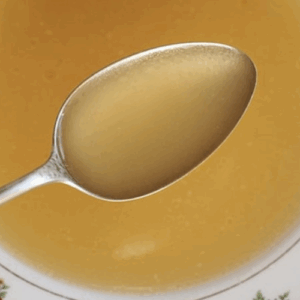
Same goes for herbal tinctures: sunlight breaks down cell walls in fresh herbs, extracting oils faster than alcohol alone. Just rotate the bottles hourly to avoid overheating.
And the same sun-power trick can be applied to dried roots or bark, like ginger or goldenseal. A few hours of sunlight will not only draw out the potent medicinal compounds, but also increase the shelf life of your tincture or extract.
I’ve used this method myself for making all kinds of remedies. I’ve made penicillin soup myself from wild plants, and I can tell you, it’s more powerful than anything you’ll find in a pharmacy. Or there’s nature’s betadine, which I’ve whipped up from a handful of herbs, and used it on everything from minor cuts to bigger scrapes.
The beauty of using solar drying and tincturing is that you’re not just making medicine. You’re making your own, personalized versions of treatments that have been relied on for centuries. These plant-based remedies can help every part of your body at once – no chemicals, just nature at its finest. If you’re ready to take your herbal skills to the next level, there’s a guide out there that shows you exactly how to harness these ancient techniques and craft your own DIY medicine cabinet. Why trust the pharmacy when nature’s got everything you need?
How to Solar-Dry Safely
Airflow is non-negotiable. I learned this the hard way after losing a batch of apple slices to fuzzy gray mold.
Now, I prop my drying racks on cinder blocks to elevate them 12 inches off the ground, letting wind whip underneath. For a quick DIY setup, stretch old window screens over a wooden frame and angle them toward prevailing breezes.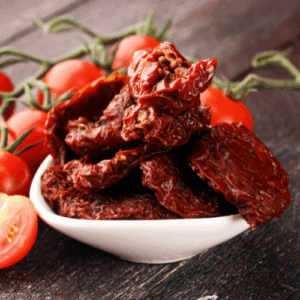
But even with airflow, humidity can sabotage you. In muggy climates, place shallow trays of salt (cheap rock salt works) near your racks; they’ll pull moisture from the air like a sponge. Last summer in Tennessee, this hack cut my drying time for okra by half.
Predators aren’t just raccoons—insects love solar buffets too. Scatter citrus peels (orange rinds, lemon slices) around your drying area. The limonene in the peels repels ants and flies without chemicals.
For meats, pH is your secret weapon. Foods with a natural pH below 4.6—tomatoes, berries, citrus—dry safely because acidity stifles bacteria.
Low-acid foods like zucchini or venison need a pre-treatment: I soak wild game jerky in a 1:4 apple cider vinegar brine for two hours before drying. This drops the pH enough to prevent nasties without overpowering the meat’s flavor.
Here’s the breakdown:
- Safe bets (pH <4.6): Tomatoes, strawberries, lemons, rhubarb.
- Tread carefully (pH >4.6): Meats, squash, green beans (pre-treat with vinegar or lemon juice).
- Never sun-dry raw: Poultry, fatty meats, dairy (stick to fermented or salt-cured versions).
Rotate your trays every 3 hours to ensure even exposure, and if clouds roll in, move everything to a breezy shaded spot—partial sun beats stagnant moisture.
Solar Preservation Hacks You Won’t Find Elsewhere
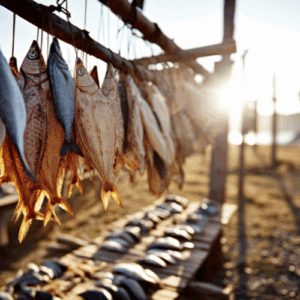
Your car is a solar dehydrator on wheels. Park a wire rack of sliced figs or zucchini on the dashboard, crack the windows for airflow, and let the greenhouse effect work.
I usually dry mulberries this way in 6 hours flat during a July road trip.
The windshield amplifies heat while blocking pests, turning your vehicle into a mobile drying lab.
Eggs without refrigeration?
Mix 1 ounce of hydrated lime into 1 quart of water, submerge fresh eggs (unwashed, bloom intact), and set the jar in full sun for 8 hours. The lime seals pores in the shells, and sunlight stabilizes the solution.
Forget pressure canning.
Fill mason jars with green beans in salt brine (1 tbsp per cup of water), screw on lids loosely, and place them in direct sun for 4 hours daily.
UV light kills surface bacteria, and daily heat cycles create a vacuum seal over 5 days.
Why Solar Drying Outshines Modern Tech When the Grid Fails
When the power dies, your freezer becomes a ticking time bomb. Solar-dried food, though? It sits stable at room temperature for years.
Electric dehydrators and freezers demand steady energy—solar drying thrives on chaos. No fuel, no cords, no panic.
Here’s the breakdown:
| Factor | Solar Drying | Electric Dehydrator/Freezer |
| Power Dependency | Zero. Works in full sun. | Dead during outages. |
| Cost | $0 after initial setup. | 0.15–0.15–0.30 per hour to run. |
| Portability | Racks can be moved to chase sun. | Anchored to outlets. |
| Failure Points | Mold (fixable with airflow). | Mechanical breakdowns, grid collapse. |
Wildfire-prone areas prove this best: smoke-choked skies still let through enough UV to dry food, while downed power lines turn electric tools into paperweights.
“But Won’t the Sun Spoil Food?”
Let’s gut-punch the fear-mongering: sunlight doesn’t “spoil” food—improper prep does.
Yes, UV light zaps surface bacteria, but it won’t nuke toxins already inside rotting produce.
Myth: Solar drying requires desert-level aridity. Not true. In my fog-prone Pacific Northwest homestead, I dry herbs and berries under partial shade with a fan rigged to a solar panel for airflow.
The key? Stretch cheesecloth over frames to block dew but let heat through. For meats, pre-treat with lemon juice (1 tbsp per pound) to lower pH and mimic desert-like acidity. Even in humidity, salt trays and elevated racks keep mold at bay.
And no, the sun won’t vaporize all pathogens. Botulism spores laugh at UV rays, which is why you never solar-dry fatty meats or oily fish without fermentation or salt. Stick to high-acid, low-moisture foods, and you’re golden.
Harnessing Solar Power for a Self-Sufficient Pantry
While freezers fail, and dehydrators collect dust during blackouts, solar-dried foods sit ready, unbothered by grid chaos.
Start today: slice two apples, lay them on a baking sheet propped on cinder blocks, and let the sun work.
In 48 hours, you’ll have sweet, chewy chips that need no electricity. Or hang a fistful of thyme upside-down under a porch awning—its oils will intensify, not fade.
Your next step isn’t complex. Grab herbs, fruit, or peppers. Slice thin. Dry under a screen. Taste the difference. Repeat. Every jar of solar-preserved food shrinks your dependency on systems that crumble.
Do NOT Store Your Dry Goods Like This
The Succulent Red Plant That Tastes Like Bacon (Video)
Why You Should Dry Your Food Instead Of Canning It

